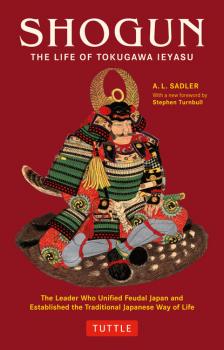ТОП просматриваемых книг сайта:
A. L. Sadler
Список книг автора A. L. SadlerАннотация
This book tells the fascinating history of the life of Shogun Tokugawa Ieyasu — Japan's most famous Shogun. Since its initial appearance, A.L.Sadler's imposing biography of the Japanese Shogun Tokugawa Ieyasu has been recognized as an outstanding contribution to the knowledge of Japanese history. It is also considered the standard reference work on the period that saw the entrenchment of feudalism in Japan and the opening of some two and a half centuries of rigid isolation from the rest of the world. In the course of Japanese history, there have been five great military leaders who by common consent stand out above the others of their type. Of these, two lived in the twelfth century, while the other three, Oda Nobunaga, Toyotomi Hideyoshi, and Tokugawa Ieyasu, were contemporary in the latter half of the sixteenth century. The last of these three, with whose life Mr. Sadler deals, may well be described as having perfected the shogunate system. Not only did Ieyasu found a dynasty of rulers and organize a powerful system of government, but also he rounded off his achievements by contriving before his death to arrange for his deification afterward. As Mr. Sadler notes, «Tokugawa Ieyasu is unquestionably one of the greatest men the world has yet seen,» and this fascinating account of Ieyasu's life and times is presented in a thoroughly absorbing narrative in which dramatic highlights abound. Japan's feudal age came to a close in 1868 with the downfall of the Tokugawa Shogunate and the restoration of the Emperor to political power. The event marked the end of the powerful regime that Ieyasu established at the beginning of the seventeenth century. That it did not at the same time mark the eclipse of Ieyasu's greatness is sufficient testimony to the major role he played in his country's history. It is to A. L. Sadler's lasting credit that he has brought this eminent but often ruthless military leader so vividly to life.
Аннотация
Chinese Martial Code provides clear, easy-to-follow translations of three of the most respected Chinese works of military strategyIt features a masterful translation of The Art of War of Sun Tzu—the most respected of all works of military strategy—as well as the less famous but equally wise The Precepts of War by Sima Rangju and Wu Zi On the Art of War.Additionally, A. L. Sadler's translation is converted here into Pinyin for the first time and the original Chinese language versions of these classic texts are also included, making this title a treasure to Chinese history and military scholars as well. The text is also copiously annotated, placing its sage advice in perspective for modern readers planning to use these time-tested strategies to conquer the business world.
Аннотация
This expert guide to Japanese architecture is of enormous historical importance to the understanding of Japanese design and culture. Pioneering Japanologist A. L. Sadler's invaluable study of Japanese architecture first appeared in 1941. Considered a classic in its field, unequaled in clarity and insight, Japanese Architecture A Short History is a lucid and uncomplicated introduction to this important aspect of Japanese culture. Beginning with the earliest evidence from prehistory and ending with the Edo period, when Japan attained stature as a modern state, Japanese Architecture is as relevant today as it was in 1941. The book includes an overview of Japanese domestic architecture as it evolved through successive periods of history and perfected the forms so widely admired in the West. Of particular importance in this respect are the four concluding chapters, in which the distinctive features of the Japanese house are presented in clear detail. The architecture book also contains excellent illustrations, which show details of planning and construction.



